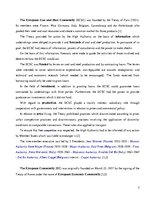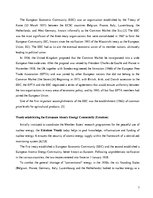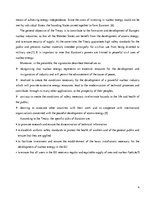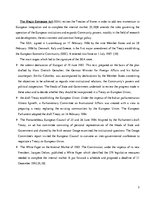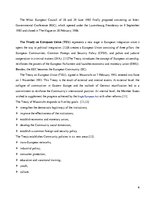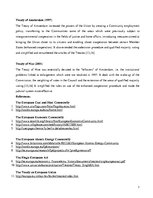The European Coal and Steel Community (ECSC) was founded by the Treaty of Paris (1951). Its members were France, West Germany, Italy, Belgium, Luxembourg and the Netherlands who pooled their steel and coal resources and create a common market for those products.[1]
The Treaty provided for action by the High Authority on the basis of information which undertakings were obliged to provide it and forecasts of coal and steel production. In pursuance of its goal, the ECSC had means of information, powers of consultation and the power to make checks.
On the basis of this information, forecasts were made to guide the activities of those involved and determine how the ECSC would act.
The ECSC was funded by levies on coal and steel production and by contracting loans. The levies were intended to cover administrative expenditure, non-repayable aid towards readaptation, and technical and economic research (which needed to be encouraged). The funds received from borrowing could only be used to grant loans.
In the field of investment, in addition to granting loans, the ECSC could guarantee loans contracted by undertakings with third parties. Furthermore, the ECSC had the power to provide guidance on investments which it did not fund.
With regard to production, the ECSC played a mainly indirect, subsidiary role through cooperation with governments and intervention in relation to prices and commercial policy.
In relation to price fixing, the Treaty prohibited practices which discriminated according to price, unfair competitive practices and discriminatory practices involving the application of dissimilar conditions to comparable transactions. These rules also applied to transport.
To ensure that free competition was respected, the High Authority had to be informed of any action by Member States which was liable to endanger it.[2]
…
The European Coal and Steel Community (ECSC) was founded by the Treaty of Paris (1951). Its members were France, West Germany, Italy, Belgium, Luxembourg and the Netherlands who pooled their steel and coal resources and create a common market for those products.[1] The Treaty provided for action by the High Authority on the basis of information which undertakings were obliged to provide it and forecasts of coal and steel production. In pursuance of its goal, the ECSC had means of information, powers of consultation and the power to make checks. On the basis of this information, forecasts were made to guide the activities of those involved and determine how the ECSC would act. The ECSC was funded by levies on coal and steel production and by contracting loans. The levies were intended to cover administrative expenditure, non-repayable aid towards readaptation, and technical and economic research (which needed to be encouraged). The funds received from borrowing could only be used to grant loans. In the field of investment, in addition to granting loans, the ECSC could guarantee loans contracted by undertakings with third parties. Furthermore, the ECSC had the power to provide guidance on investments which it did not fund. With regard to production, the ECSC played a mainly indirect, subsidiary role through cooperation with governments and intervention in relation to prices and commercial policy. In relation to price fixing, the Treaty prohibited practices which discriminated according to price, unfair competitive practices and discriminatory practices involving the application of dissimilar conditions to comparable transactions. These rules also applied to transport. To ensure that free competition was respected, the High Authority had to be informed of any action by Member States which was liable to endanger it.[2]

